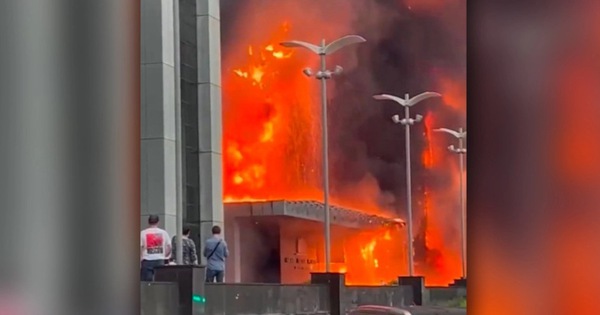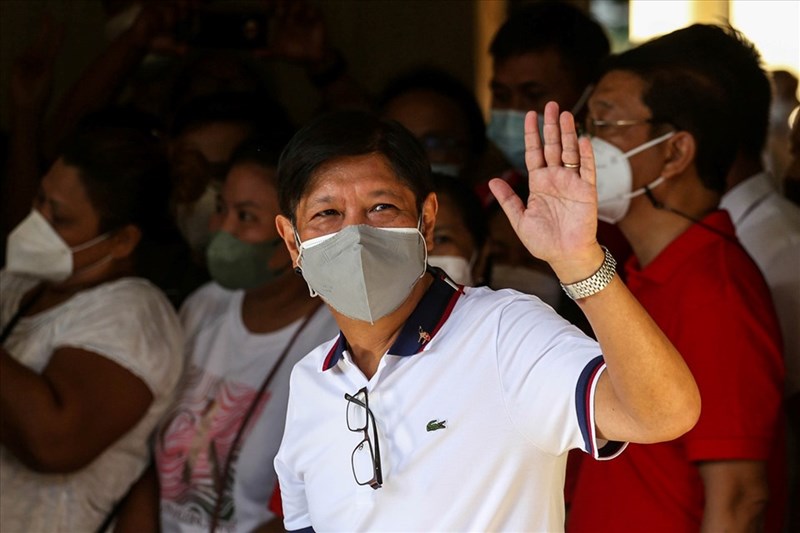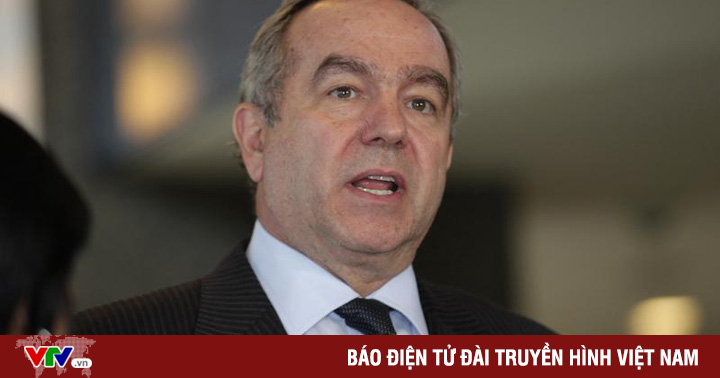Poland spent years planning a break with Russian gas and was ready to respond after Moscow decided to shut the valve.
Piotr Naimski, the Polish government’s special envoy for strategic energy infrastructure, and colleagues in the Polish Ministry of Energy have been racing against time to end imports of Russian gas by the end of the year, after Moscow launched a military operation in Ukraine.
However, the decision gas valve lock Russia on April 26 pushed Mr. Naimski and Poland’s plans many months ahead.
“We are prepared. We have the capacity to bring enough gas to Poland for all the people. We can be calm in the face of this situation,” Naimski said on the morning of April 27, a few hours later. when Russian gas corporation Gazprom announced the suspension of deliveries.

Piotr Naimski, Polish government special representative for strategic energy infrastructure. Image: WPROST.
Poland and some of its neighbors, including Lithuania, are ahead of Europe in preparing for life without Russian gas. However, securing a steady energy supply in the coming weeks may not be straightforward. Poland, a country of 38 million people, imports about 50% of its gas from Russia to heat and power countless homes and factories.
Russia said it was blocking gas valves to Poland because the country refused to pay in rubles as requested, although some analysts say Moscow may be punishing Warsaw for its strong support for Poland. Ukraine.
“Poland is Europe’s sixth-largest market and I think they want to show they can punish a big partner,” said Marcin Roszkowski, president of the Jagiellonian Institute in Warsaw.
In an interview at the Warsaw office last weekend, Naimski, 71, outlined the grand plan they have been preparing for more than 20 years to break with Russian gas, switch to supplies from Norway, America and many other allies.
Poland’s energy security “gatekeeper” presents a near-complete network that the country has spent years building: a multi-billion dollar repository for liquefied natural gas (LNG) imports. By ship, a network of pipelines passes through Poland and connects with friendly neighbours, and an undersea pipeline to Norway is slated to open on October 1.
“We can do it,” Naimski said, referring to Poland and its European neighbors considering cutting off Russian energy supplies. “All sanctions are costly, but money cannot be thought of at this stage.”
Poland consumes about 20 billion cubic meters of gas per year, about half of which is supplied via pipelines from Russia. Poland produces about 3 billion cubic meters of its own and imports more than 6 billion cubic meters of LNG per year through its port in the Baltic Sea. Most of the LNG comes from the US and Norway.
The most important part of Poland’s energy independence strategy is the new pipeline from Norway, which Environment and Climate Minister Anna Moskwa calls “Mr Naimski’s great pride”. When in operation, the pipeline is capable of supplying 10 billion cubic meters of gas to Poland each year.
The big question now is whether Norway and Denmark, the two countries through which the pipeline project runs, will work together to speed up the pipeline’s opening date.
Roszkowski said that the pipeline could be commissioned sooner than expected. But even if the project is late, he and other analysts think Poland will be able to make it through the next few months without Russian gas, when its stockpile is more than 75% full and has can import more gas from Virtue.
A new pipeline between Lithuania and Poland, built under Naimski’s direction, is also scheduled to open on May 5, allowing the two countries to share gas.
For Poland, “this is not really a crisis,” according to Laurent Ruseckas, energy analyst at S&P Global.
Naimski’s colleagues also expressed confidence in their ability to live without Russian gas. “Poland is an energy safe country and will not bow to Russian gas pressure,” Minister Moskwa tweeted yesterday.

Part of the Gaz-System gas distribution system in Gustorzyn, central Poland. Image: Reuters.
Naimski says he began prioritizing a future of energy independence as soon as Poland’s energy and security chief in 1992, shortly after the Soviet Union disintegrated and Warsaw was abruptly cut off from gas supplies by Moscow. in a few days.
“It was in the winter. We had to prepare a list of industrial facilities that had their gas supply cut off in case we didn’t have it,” he recalls.
Russia then quickly resumed supplies, calling it an incident amid post-Soviet chaos. But the incident has made Naimski skeptical about Poland’s future dependent on Russian gas.
He began promoting the pipeline project with Norway, but in the early 1990s not everyone saw energy as a matter of national sovereignty. By 2001, Mr. Naimski and his right-wing political allies had lost power. The new leftist government abandoned the pipeline project.
Mr Naimski’s Law and Justice Party returned to power in 2005 and began planning the construction of an LNG port on the country’s Baltic coast. The floating archive was completed in 2016.
Naimski also resumed talks with Norway and Denmark over the undersea pipeline, but when his party left government a few years later, the second project was abandoned.
When the Law and Justice party returned to power again in 2015, Mr Naimski tried to negotiate with Norway and Denmark for a third time.
“I met some colleagues I’ve known for a long time in Copenhagen and Oslo,” he said. “Some even asked us if we were serious this time. What we have today is proof.”
Robert Tomaszewski, an energy analyst at research firm Polityka Insight, said Russia’s decision to cut supplies came as spring has already begun with falling heating demand, making it easier for Poland to cope. He did not see a risk of a supply shortage, but warned that rising gas prices could fuel high inflation across Europe, if some other countries were unable to access Russian energy.
“The biggest risk is that gas is still there, but the price will be higher,” he said.
Naimski’s next priority is completing construction of a second LNG storage facility in the port city of Gdansk. This LNG storage is expected to be completed by the end of 2027, but Mr. Naimski wants to shorten it by 2 years.
After Poland secures domestic supply, Mr. Naimski hopes to be able to supply the remaining gas to members of the European Union (EU).
“If necessary or required, we will be able to move some of the gas to the neighboring countries. So for this region, this is really a huge change,” he said.

Pipelines that deliver Russian gas to Europe. Click on the picture to see details.
Thanh Tam (According to Washington Post)
at Blogtuan.info – Source: vnexpress.net – Read the original article here



